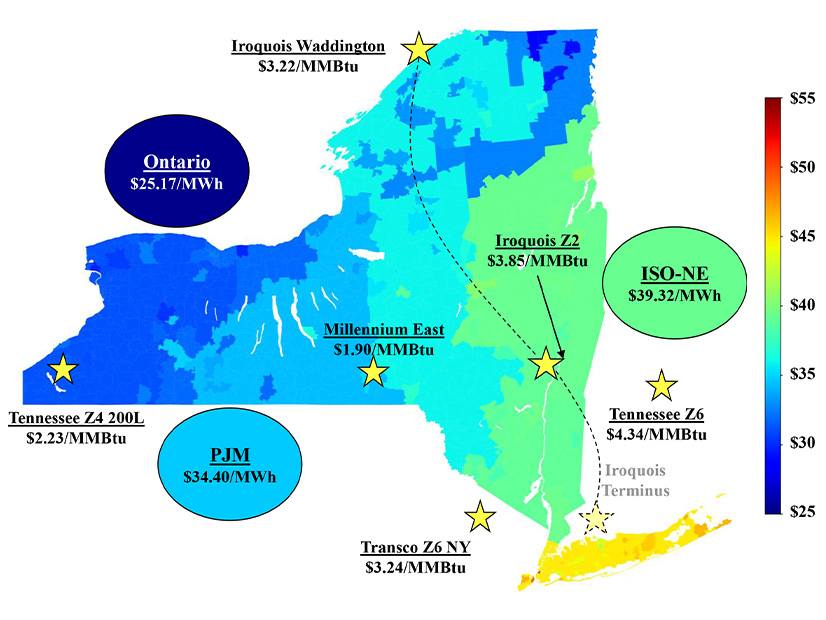New York City saw a 221% increase in capacity costs in the first quarter because of the retirement of over 600 MW in peaker plants and the increase of more than 300 MW in the local installed capacity requirement, NYISO’s Market Monitoring Unit told stakeholders July 10.
Capacity costs elsewhere in the state rose “modestly,” Potomac Economics said in presenting its first-quarter State of the Market report to the Installed Capacity Working Group.
Overall, the MMU found that the market performed competitively in the first quarter. But spot capacity prices rose by 311% in New York City over the first quarter of 2023. The city’s ICAP requirement was increased because of higher load forecasts.
All-in prices ranged from $38/MWh in the North Zone to $81 in New York City. Prices rose west of the Central-East interface and the city while falling in the rest of Eastern New York. Potomac attributes this partially to falling natural gas prices.
Across the state, gas prices fell between 8 and 29% compared to a year ago because of the mild winter and continued growth in gas production. But the city was left behind in this trend and saw a 10% increase.
“The last two winters had much lower gas prices than in the previous winter. … That’s virtually true everywhere,” said MMU’s Pallas LeeVanSchaick.
New York City’s experienced modest increases in energy prices driven by congestion from transmission outages, while NYISO day-ahead congestion revenues fell 47%. The completion of several transmission projects increased transfer capacity over the Central-East and UPNY-SENY interfaces.
“Congestion revenue shortfalls during the quarter were pretty small,” said LeeVanSchaick. “They’re way down from the previous couple years because the amount of outages was really reduced quite a bit.”
The city also accounted for a higher level of congestion this quarter, most of which occurred during a period of low temperatures in January that coincided with the outage of a transmission line, reducing the import capability. That outage alone led to $5 million in congestion shortfalls during the cold snap.




